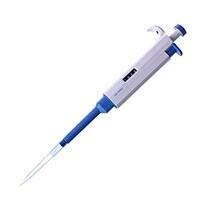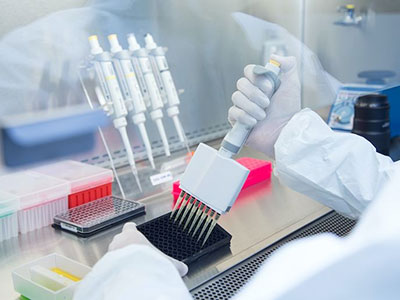How to Use a Pipette?
Pipette: A measuring device used to accurately transfer a certain volume of solution. A pipette is a measuring instrument used only to measure the volume of the solution it releases. Common specifications (ml): 1, 25, 10, 20, 25, 50, 100ml, etc. In this article, ATO industrial automation has organized the details of how to use pipettes for you.
Inspection before Use
- Check whether the accuracy level of the pipette meets the usage requirements;
- Whether the pipette markings, scale lines are clear, and the position of the scale lines;
- Has the pipette been calibrated and within the calibration period;
- Check the cleanliness of the pipette;
- Check the mouth and tip of the pipette for damage. If there is any damage, it cannot be used.
Washing before Use
- When the pipette is not too dirty, rinse it thoroughly with tap water, and then rinse it with distilled water 3 to 6 times as a backup (The washing method is described below).
- When the pipette cannot be washed clean with water, synthetic detergent or chromic acid washing solution can be used for washing.
- If the inner wall is severely contaminated, it should be placed in a container containing washing solution, soaked for 15 minutes to several hours, removed, and washed thoroughly with tap water. Then, rinse (rinse) with distilled water 3 to 6 times.
Washing Method
Hold the pipette or the upper end of the pipette in a suitable position with the right hand, with the index finger close to the opening of the pipette, the middle finger and ring finger open, and hold the outer side of the pipette with the thumb in the middle of the middle finger and ring finger. Hold the inner side of the pipette and let the little thumb relax naturally; Hold the ear ball with your left hand in a clenched fist position, hold the ear ball in your palm with the tip facing downwards, grip the ear ball tightly, and expel air from the ball. Insert the tip of the ear ball into or close to the top of the pipette, taking care not to leak air. Slowly release your left finger and inhale the washing solution into the tube. When the amount of chromic acid washing solution is about 1/3 of the pipette, quickly block the upper opening of the pipette with your right index finger, place the pipette horizontally, hold both ends of the pipette with both hands, rotate the pipette, and let the washing solution fill the entire inner wall of the tube. After soaking for a while, pour the washing solution back into the original bottle and rinse it with tap water, then rinse it three times with distilled water, Place on a clean pipette rack for backup.
Judgment Criteria
The inner wall of the cleaned pipette can be evenly wetted with water without any contamination such as water hanging; And a normal meniscus is formed at the contact between the surface and the pipette. If the washed pipette does not meet the requirements, it should be washed again.
Moisturizing
Shake well the solution to be aspirated, pour a small amount of the solution into a clean and dry small beaker, use filter paper to absorb the water inside and outside the cleaned tip of the pipette, and insert it into the small beaker to aspirate the solution. Use the suction method during washing to aspirate the solution. When the solution reaches 1/3 of the pipette's capacity, immediately press the opening of the pipette with your right index finger, remove it, hold it horizontally, and rotate the pipette to allow the solution to soak the entire inner wall of the pipette, When the solution flows to 2-3cm above the scale line, stand the pipette upright and allow the solution to be discharged into the waste liquid cup from the lower tip to replace the water on the inner wall, ensuring that the concentration of the solution being transferred remains unchanged (note: the sucked solution cannot flow back to the original bottle to prevent dilution). After this operation, the solution can generally be sucked out by rinsing three times.
Absorb
Insert a pipette 1-2 cm below the liquid level of the solution to be aspirated, and use an ear wash bulb to aspirate the solution according to the washing method (note that the pipette should not be too deep or too shallow when inserted into the solution. If it is too deep, it will cause too much solution to adhere to the outer wall of the tube and affect the accuracy of measuring the solution. If it is too shallow, suction will occur due to the decrease of the liquid level, and the solution will be contaminated when sucked into the ear wash bulb). Move it down as the liquid level drops, always maintaining this depth. When the liquid level inside the tube rises to 1-2 cm above the mark, quickly remove the ear wash ball and block the opening of the tube with the index finger of the right hand. If the solution falls below the mark, the pipette should be sucked out of the liquid level, and the tip of the pipette should contact the inner wall of the small beaker for a moment before lifting it up. Use filter paper to dry the small amount of solution adhered to the lower end of the pipette. Note that when moving the pipette, the pipette should be kept vertical and not tilted.

Adjusting the Liquid Level
The tip of the pipette is tightly against the inner wall of the small beaker and the tube body is tilted perpendicular to the beaker at an angle of about 45 °. The line of sight and the scale line are kept horizontal, and the index finger of the right hand is slightly released (or the pipette is gently rotated with the thumb and middle finger) to allow the solution in the tube to slowly flow out from the lower mouth. The liquid level drops steadily. When the bottom line of the meniscus surface of the solution is placed tangent to the upper edge of the mark, immediately press the tube mouth with the index finger, and the tip is tightly pressed against the inner wall of the beaker, moving a little towards the beaker mouth, and remove the sharp droplets.
Discharge Liquid
Carefully transfer the pipette into the container that receives the solution. Stand the pipette upright and tilt the container at an angle of about 45 degrees. The tip of the pipette should be close to the inner wall of the container and let it be vertical. Release the index finger and let the solution flow naturally along the inner wall. When the solution drops to the tip of the pipette, maintain the position of discharge and let it rest for 15 seconds, Gently rotate the tip of the pipette against the inner wall of the receiving container once (or slide it down a small distance before and after the receiving container) to remove the pipette. The small amount of solution remaining on the inner wall of the tube tip cannot be forced out by external force. If the pipette body is marked with the word "blow", when the solution flows naturally and does not flow at the tip, immediately use an ear wash ball to blow out the residual solution.
Cleaning and Storage after Use
After using the pipette, it should be immediately rinsed with tap water and distilled water and placed on the pipette rack.
Original Data Record
The original data related to the pipette is generally recorded to two decimal places based on its accuracy.
Notes
- The pipette should not be dried in an oven.

- The pipette should not be used to remove solutions that are too hot or too cold.
- In the same experiment, the same liquid tube should be used as much as possible.
- Pipettes and volumetric flasks are often used together, so relative volume calibration of the two is often performed before use.
- When using a pipette, in order to reduce measurement errors, the required volume of solution should be discharged from the top scale (0 scale) as the starting point each time, rather than being absorbed as much volume as needed.

